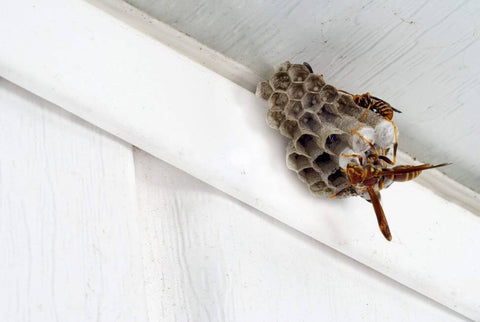When trying to enjoy your outdoor space, you don’t want to be worried about getting stung by an insect. Stinging insects are active when temperatures rise, but their level of activity and their behaviors change throughout the season. Knowing what to expect from these insects will make it easier to avoid their stings. Check out when stinging insects are most active and what to expect from them.
Stinging Insects in Spring

Stinging insect activity begins in spring. Queen wasps spend winter in a state of diapause, which is an insect’s form of hibernation. When it gets warm in spring, queens begin their activity. The queen searches for a place to nest and starts laying eggs. As eggs hatch and worker wasps develop, the colony will continue to grow. Stinging insects spend this time caring for the nest and the developing wasps.
Stinging Insects in Summer

As spring turns to summer, populations continue to grow. The work stinging insects have put into the colony has paid off. The worker wasps have taken over caring for the nest, and the queen is focused on laying eggs. Toward the end of summer, populations reach their peak with hundreds to thousands of wasps living in a colony. This population growth leads to more stinging insects buzzing around. Because there are more insects present, they will seem to be more active.
Stinging Insects in Fall

As temperatures start to cool in fall, stinging insects start preparing for winter. Their food supply is limited, so they have to be resourceful. You’re likely to see more of these pests hanging around when you eat outside. Not only are stinging insects hungry, they are also more protective of their queen. For a new colony to emerge in spring, the queen needs to survive. These two factors cause stinging insects to be more aggressive in fall.
Stinging Insects in Winter

In winter, you aren’t likely to find many stinging insects. These pests can’t handle the cold and most die. However, queen wasps enter a state of diapause. During this stage, their growth is paused. They spend winter in warm and undisturbed locations including under logs, in chimneys, wall voids, and attics. They remain inactive until things start to warm up in spring. You may notice these wasps in your house when they first become active.
What Time of Day Are Stinging Insects Active?

Stinging insects are most active in the middle of the day. This is when the workers leave the nest and search for food. They will return to the nest in the evening and stay inside throughout the night. If treating a nest, you’ll want to spray the nest in the evening or in the morning when wasps are still in the nest. Our plant-based Wasp & Hornet Killer kills and repels wasps, yellow jackets, and hornets. It’s a foaming jet spray that reaches up to 18 feet, allowing you to keep your distance from the nest.
When spending time outside, it’s always helpful to know what pests you may encounter. Taking precautionary measures can help you avoid a run-in with stinging insects and other bugs. If you’re dealing with a pest problem, we’re here to help! For a more environmentally and family-friendly solution when used as directed, check out our Maggie’s Farm Simply Effective™ Pest Control products.
